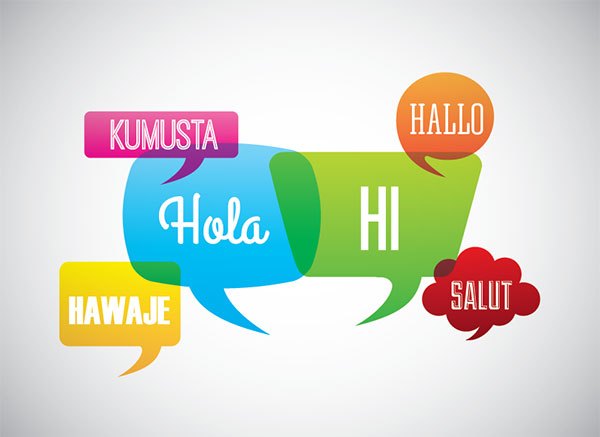Business必利勁
es today are not bound by the physical boundaries of countries and market. This is evident from the fact that we can find the biggest brands from countries in the United States enjoy a similar market in a country like India and vice-versa. What’s noteworthy is how the significance of regional languages has positively changed across the globe in the last few years. After all, customers across the globe still prefer to speak in their ‘mother language’ or the ‘heart language’ when it comes to complaints and queries. This is exactly what started the evolution of customer service and the foundation on which Multilingual social media customer service was conceptualized.
Identify your audience demographics
Marketers should always identify and remember whom they are targeting and this obviously includes having awareness about what language their target audience speaks. For instance, you may be always left wondering why your US-based organization found little to no customer interactions with Spanish-speaking followers when in fact you never gave them the platform to interact with you, by solely concentrating on English as the medium for communication. This could be easily avoided by hiring the services of a Multilingual call center that offer Spanish call center services.
Similarly, an Indian-based company with a potential client base in France and Spain for herbal and organic products may have been left unexplored due to the absence of multilingual customer support in the form of a French call centre
or Spanish call centre. These are opportunities lost much before they were ever grabbed.
Multilingual customer support outsourcing solutions can help businesses extend their reach beyond their geographical boundaries and do business successfully melting away any linguistic barriers. Most of them offer Multilingual social media support as a part of multilingual outsourcing solutions.
Relying on translation tools can be a recipe for disaster
Brands invent clever tag lines or witty captions to capture attention and linger on in peoples’ memory. However, the problem arises when these punchy taglines are simply translated in other languages to target local audience in different countries. Not only is satire, humour or wordplay that is the mainstay of these taglines is easily lost in translation, especially if it is done by machine, it can also go horribly wrong if the new word has any unpalatable meaning in the other language, something we have witnessed woefully in case of a lot of brands.
The “Turn It Loose” campaign of American beer maker Coors in Spain where the tagline, when translated into Spanish, meant, “Suffer from diarrhoea.” In Belgium, auto giant Ford made a similar blunder while highlighting the excellent manufacturing of its cars. The executives thought this campaign said “Every car has a high-quality body” but the slogan when translated actually meant, “Every car has a high-quality corpse”. In 1987, Braniff Airlines got in trouble with its campaign “Fly in Leather” that when translated into Spanish (“Vuela en Cuero”) meant “Fly naked” in Mexico. That would not have happened if they had a Spanish Call Center on board taking care of their Spanish Social Media. Similarly,
From the customer service point of view, translation falls severely short of expectation.
It is neither possible to convey your message or fully comprehend what the customer is trying to communicate using translation. It if you have French customers, have a French call center to support them, not a chatbot lest a disaster like quoted above haunts your brand forever!
Take cross-cultural sensitivities and linguistic considerations into account
Cultural sensitivity, local knowledge, and insights can go a long way to ensure improved and high-quality targeted marketing. This is simply because customers living in different countries have different ways of thinking and how they react to promotional messages of business. Your business just cannot afford to start a campaign in a new market only to find it later that it knowingly or unknowingly hurt or pose a conflict with the beliefs or thinking of the target audience.
Let us explain this with the help of an example. Proctor & Gamble started selling Pampers diapers in Japan with the product packaging featuring a stork delivering a baby. In countries like the United States, this may have worked but Proctor & Gamble soon found that Japanese customers were actually left confused and concerned with the image of a stork carrying a baby. This was because it is actually the giant-floating peaches and not storks according to Japanese folklore that bring babies to their parents.
Moreover, decision-makers in an organization should think smartly and have enough market awareness to find out the unique selling proposition of a particular product and how it would be received by potential customers in a particular market. For instance, it makes sense to highlight the speed of delivery if your target audience is from fast-paced cultures and emphasize on competitive pricing will be an excellent choice if a majority of your potential customers have less disposable income.
Keep time zones in mind
There is enough research on ‘the best time o post’ on different social media platforms to elicit the best response and engagement from your target audience. That time is, of course, different for different markets across the globe. Irrespective of where you are located, your social media posts should go out at the right time that is relevant to the time zone of your target market. Similarly, if you do support multilingual social media customer service, you need to be available to respond to your customer queries in the time zone of your customer. It is easily doable with the help of Multilingual call center outsourcing solutions
as multilingual call centres usually work round the clock.
At LiveSalesman, we offer Multilingual Social Media Customer Support as a part of our Multilingual Outsourcing Solutions. The support is available in French, German, Spanish, Chinese amongst 30 other European and Asian languages. Talk to us today to learn more.


Comments are closed.